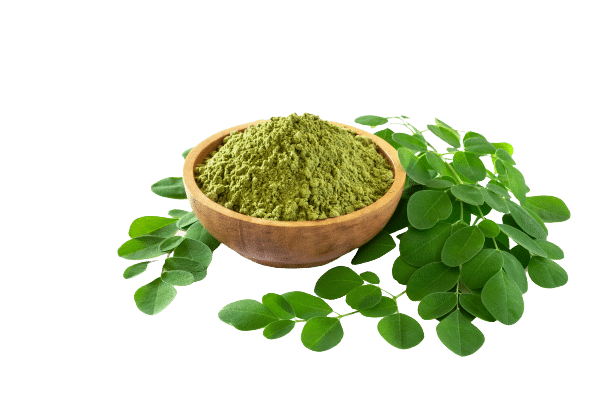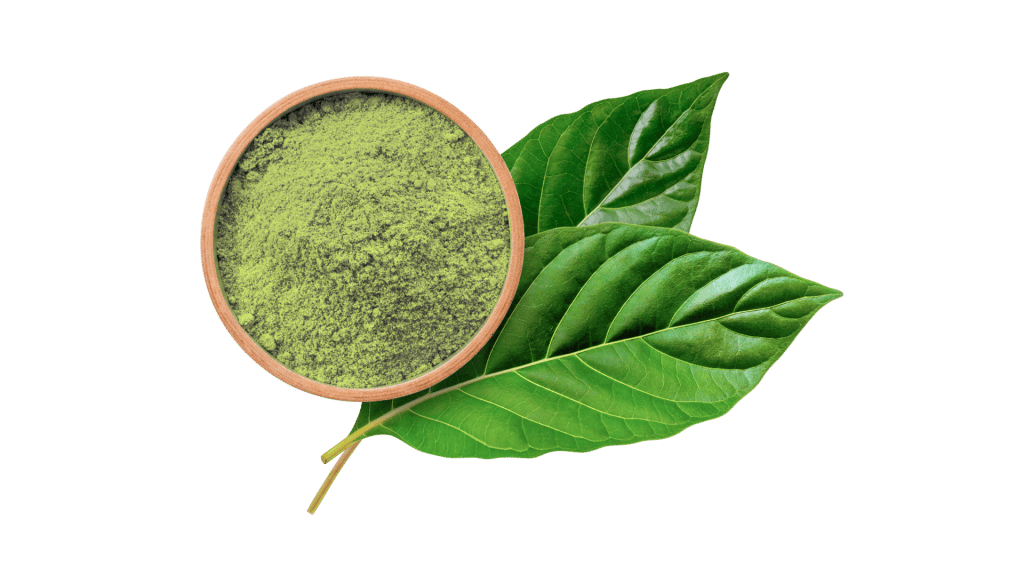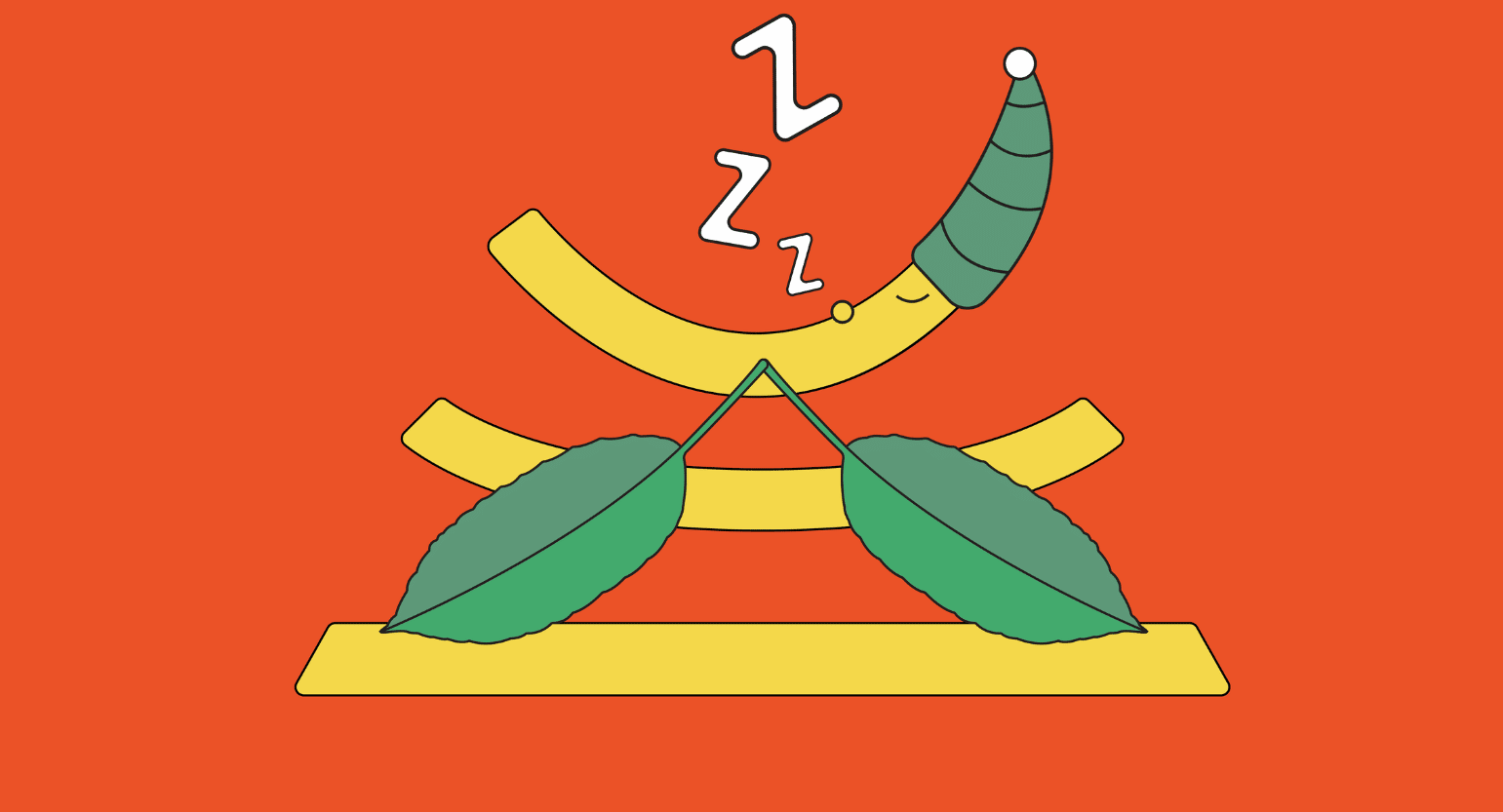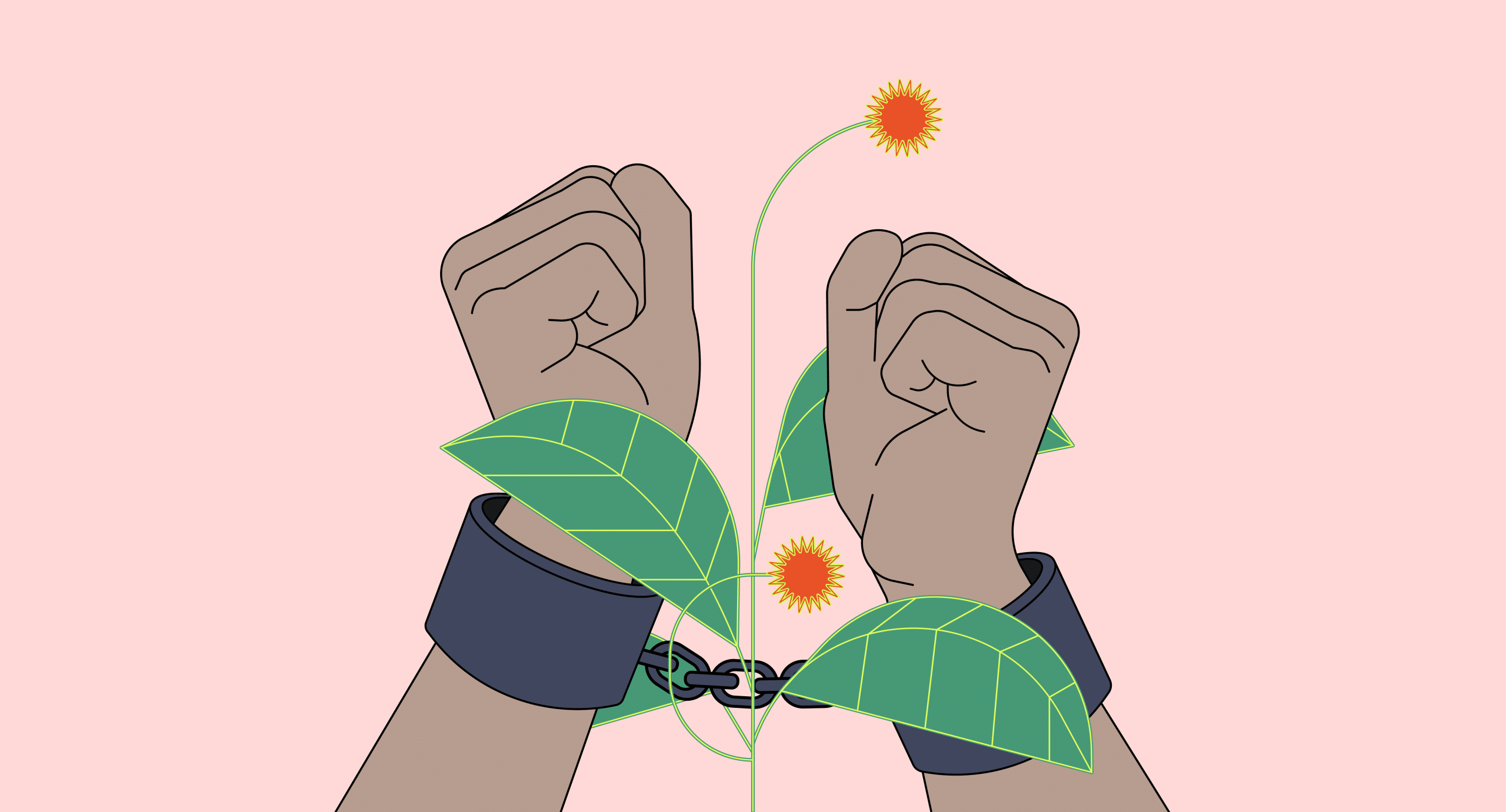Side-By-Side Comparison: Kratom vs. Moringa
| 🍃 Kratom | 🍃 Moringa | |
| Availability | Unrestricted | Unrestricted |
| Natural or Synthetic? | Natural | Natural |
| Active Ingredient(s) | Mitragynine, 7-hydroxy-mitragynine, & other plant-derived alkaloids | Moringinine, quercetin, and chlorogenic acid |
| Indications | Boost energy & focus, chronic pain, opiate withdrawal, anxiety, & sleep | Boost energy, protect tissues, & reduce physical pain |
| Dosage | 2 – 12 grams per day | 2 – 12 grams per day |
| Common Side Effects | Nausea, vomiting, lethargy, dizziness, anxiety, brain fog, constipation | Stomach upset, gas, diarrhea, heartburn, interactions with thyroid and diabetes meds |
| Level of Risk | High | High |
| Risk of Addiction | Moderate | N/A |
| Cost | $0.40 – $0.80 per gram | $0.04 – $0.10 per gram |
Summary: Moringa vs. Kratom
Moringa and kratom are naturally derived substances that can provide users with various benefits. They are both available in powder and capsule form, and both can be used to increase energy levels.
However, there are also some key differences between these two substances.
Let’s take a closer look at some differences and similarities between moringa and kratom.
Duration of Effects: Kratom vs. Moringa
Kratom and moringa have a comparable onset of effects — which makes sense; both herbs are consumed as raw powder that needs to pass through the stomach and into the intestines, where they can be absorbed.
You can expect the effects of kratom to kick in around 20 or 30 minutes after taking it and last around 6 to 8 hours.
Likewise, moringa takes the same time to start taking effect, but you may not notice any differences for a few days. Moringa is more subtle than kratom and takes a few repeated doses before you will start to notice any signs of improvement.
Dosage: Moringa vs. Kratom
Dosage recommendations for moringa are all over the place, but the general guideline is between 2 and 12 grams per day.
The best dosage for kratom depends on what you hope to gain from using it. If you want the energizing effects of kratom, lower doses are better (up to 4 grams). If you want painkilling, sedative, or anxiolytic benefits, you’ll need a higher dose (around 5 grams or more).

The general kratom dosage guidelines also tend to be between 1-12 grams daily. Doses over 8 grams are considered incredibly high and potent and should only be attempted by experienced users.
Health Benefits: Moringa vs. Kratom
Moringa is typically used as a health supplement, like vitamin C, for example. It’s uncommon for people to use moringa recreationally — there’s no benefit to using it this way.
People use moringa because they are seeking some of the health benefits it has to offer — such as a boost in energy or its immune-supportive properties.
On the other hand, kratom is favored for its ability to manage pain and help an individual feel more motivated, focused, and relaxed. Kratom is more likely to be used recreationally since it can produce effects comparable to opioids (euphoric, intoxicant, and numbing).
Let’s break down the most common benefits and effects of kratom and moringa.
What Are The Health Benefits of Moringa?
Moringa is rich in essential vitamins and minerals. Moringa leaves are said to have 7x more vitamin C than oranges and around 15x more potassium than bananas. Moringa also contains protein, iron, calcium, and amino acids — all of which help your body build muscle and heal quickly.
Moringa is rich in antioxidants, which protect cells from free radical damage and may also support the immune system. There’s also evidence that some antioxidants can reduce body fat in the blood and lower blood pressure [1, 2].
Most of the studies that exist today on moringa’s potential health benefits have been conducted on rodents. While these studies are interesting and may give us some insight into the potential moringa has for humans, we don’t know if the results of these studies would have the same outcomes for humans.
Some studies suggest that moringa may be beneficial for those with rheumatoid arthritis [3] since it may mitigate some symptoms such as redness, pain, and swelling.
Moringa is also used to lower blood sugar and manage diabetes. The chemicals found in the moringa leaves have the potential to aid the body in processing sugars. It may also affect how the body releases insulin. This study was conducted on pregnant diabetic rats [4].
Another smaller study evaluated six people with diabetes who took 50 grams of moringa leaves with a meal; this study ultimately revealed that moringa reduced the rise in blood sugar by 21% [5].
There has also been some promising evidence of moringa helping slow the growth of cancer cells. It may also help chemotherapy work more effectively. These anti-cancer findings suggest that the leaves, seeds, bark, and roots may have some anti-cancer potential that may lead to the discovery of new drugs [6].
There may also be some chemicals and antioxidants found in moringa that protect the liver and reduce inflammation [7].
The most common uses for moringa include:
- Antioxidant properties
- Immune support
- Lowering blood sugar levels
- Lowering cholesterol
- Reducing inflammation
Health Benefits of Kratom
Kratom contains two primary alkaloids (mitragynine and 7-hydroxymitragynine) that are responsible for kratom’s ability to reduce pain and promote relaxation.
Many users have found success using kratom to make them feel more positive, uplifted, and motivated. Others use kratom for pain relief, sedation and sleep support, and anxiety relief. There have been plenty of human experiences over decades that indicate kratom has an array of health benefits.
Medicinal use of kratom has been documented back at least 150 years in Southeast Asia and has long been described as a stimulant that was used for challenging labor to help the natives be more productive and work longer hours. Similarly, moringa has a long history of medicinal use by Indians and Africans.

Kratom has been noted as an effective stimulant, yet it also produces analgesic effects [8]. The effects depend heavily on the dose and strain taken.
Taking small doses (0.5 – 3 grams) typically produces stimulating effects, while larger doses (anything above 5 grams) will promote relaxation and sedation.
Red vein kratom is favored for its sedating, pain-relieving properties. White vein kratom is noted for being highly stimulating, increasing focus, and reducing stress. Green vein kratom is a nice middle ground between the other two, offering a bit of everything.
The most common uses for kratom include:
- Decreased stress levels
- Enhances mood
- Increased concentration and focus
- Increased confidence
- Increased energy
- Pain relief
- Relaxing effects
- Sedating effects
- Stimulating effects
Legality: Moringa vs. Kratom
Moringa is completely legal in the U.S. You can purchase it virtually anywhere that sells vitamins and health supplements.
Kratom is federally legal in the United States, but a handful of states have banned the use of the herb.

The bottom line is that they are both legal, except for a few states that have banned kratom.
List of U.S. States That Have Banned Kratom:
How to Use Moringa
First, let’s talk about how moringa is harvested and processed. Green moringa pods that aren’t mature yet are prepared like you would prepare green beans. The seeds are removed from the moringa pods, and they are roasted like nuts. The leaves of the M. oleifera tree are cooked down like you would any other leafy green vegetable, like spinach, for example.
Leaves are also dried and processed into a powder, which is then used as a condiment or additive. Moringa powder can be added to shakes, smoothies, and yogurt. This is the most common way to consume moringa. Moringa supplements are also available, which contain powdered leaves and seeds.
All of these are also popular ingestion methods when it comes to kratom powder.
Users report feeling focused, energized, and alert during the day after ingesting moringa. The moringa powder is rich in amino acids, vitamins, and minerals, all of which make it an excellent natural energy booster.
Small kratom doses can produce very similar effects.
Although it is rare, sometimes moringa powder can cause unwanted side effects — such as slowed heart rate, uterine contractions, upset stomach, and diarrhea.
How Long Do The Effects of Moringa Last?
Moringa is not necessarily something you use and expect an immediate result; this is especially true for skin issues or immune issues, which take time to be resolved.
This herbal supplement requires some time to build up in your system and will work from the inside over time, ultimately supporting your overall health.
However, you can expect the stimulating effects almost immediately after ingesting moringa. Users will feel more energized throughout their day, making it easier for them to stay focused and get things done.
How to Use Kratom
In the same way as moringa, kratom leaves are harvested and processed. This involves drying, curing, and pulverizing the leaves into a fine powder rich in the alkaloids mitragynine and 7-hydroxymitragynine.
Mitragynine and 7-hydroxymitragynine are noted for their opiate-like effects, effectively relieving pain and relaxing the user.
Kratom can be used as a stimulant in smaller doses, while larger doses are known to be sedating and deeply relaxing.
Kratom powder is usually ingested by making tea, mixing it with other beverages, or via capsules or extract form. Some people have also found success baking with kratom powder, incorporating it into sweets like cookies and brownies. You can also incorporate moringa powder into baked goods.

Unlike moringa’s earthy taste, kratom powder is harsh and bitter in flavor. They may both be green powders, but moringa is much easier on the palate than kratom.
Some common side effects of ingesting kratom include nausea, vomiting, dry mouth, dehydration, and headaches.
Final Thoughts: Kratom vs. Moringa
Moringa and kratom are both green powders known for producing stimulating and energizing effects. However, moringa cannot produce the deeply sedating and relaxing effects that kratom offers in larger doses.
The doses for both fall somewhere between 2-12 grams daily. The stimulating effects of moringa can be felt not long after ingestion, and the same goes for kratom.
Kratom effects can vary greatly depending on your dose and the strain of kratom you’re ingesting. On the other hand, moringa tends to offer more straightforward, predictable effects.
Moringa has had quite a few studies conducted on rodent models that have given us some insight into the superfood’s potential health benefits. Kratom has been used by humans for hundreds of years, but the studies are much more limited.
While moringa and kratom do share some similarities, they also have plenty of differences.
If you are looking to reduce inflammation and lower your cholesterol or blood sugar levels, moringa is the best way to go.
Alternatively, if what you need is to increase your energy levels, relieve any pain or enhance your mood, kratom use is ideal.
- Chumark, P., Khunawat, P., Sanvarinda, Y., Phornchirasilp, S., Morales, N. P., Phivthong-Ngam, L., … & Klai-upsorn, S. P. (2008). The in vitro and ex vivo antioxidant properties, hypolipidaemic and antiatherosclerotic activities of water extract of Moringa oleifera Lam. leaves. Journal of ethnopharmacology, 116(3), 439-446.
- Mbikay, M. (2012). Therapeutic potential of Moringa oleifera leaves in chronic hyperglycemia and dyslipidemia: a review. Frontiers in pharmacology, 3, 24.
- Shailaja G. Mahajan, Ravindra G. Mali & Anita A. Mehta (2007) Protective Effect of Ethanolic Extract of Seeds of Moringa oleifera Lam. Against Inflammation Associated with Development of Arthritis in Rats, Journal of Immunotoxicology, 4:1, 39-47
- Gondo H K. Moringa oleifera decreases blood sugar level and blood pressure in pregnant diabetic rats. J Adv Pharm Educ Res. 2021;11(2):88-91.
- Felicia William, S. Lakshminarayanan & Hariprasad Chegu (1993) Effect of some Indian vegetables on the glucose and insulin response in diabetic subjects, International Journal of Food Sciences and Nutrition, 44:3, 191-195
- Mutmainah Arif, Ika Yustisia, Padlianah, The combination from ethanol extract of moringa leaves (Moringa oleifera L.) and ethanol extract of papaya leaves (Carica papaya L.) slows the tumor growth in Sprague Dawley rats induced 7,12-dimethylbenz(a)anthracene, Medicina Clínica Práctica, Volume 3, Supplement 1, 2020, 100100, ISSN 2603-9249
- A.L. Fotio, M.S.D. Nguepi, L.B. Tonfack, R.J.G. Temdie, T.B. Nguelefack, Acetaminophen induces liver injury and depletes glutathione in mice brain: Prevention by Moringa oleifera extract, South African Journal of Botany, Volume 129, 2020, Pages 317-323, ISSN 0254-6299,
- Prozialeck, Walter C., Jivan, Jateen K. and Andurkar, Shridhar V.. “Pharmacology of Kratom: An Emerging Botanical Agent With Stimulant, Analgesic and Opioid-Like Effects” Journal of Osteopathic Medicine, vol. 112, no. 12, 2012, pp. 792-799.









